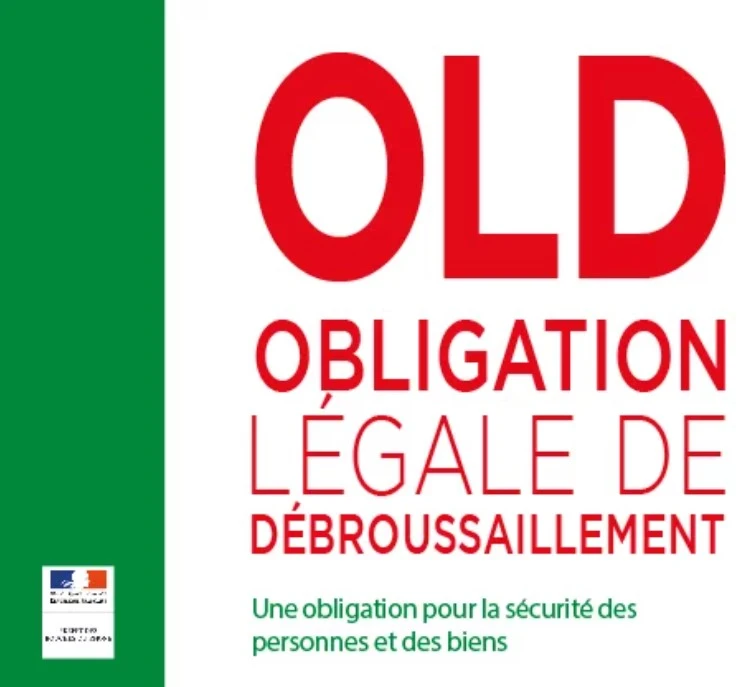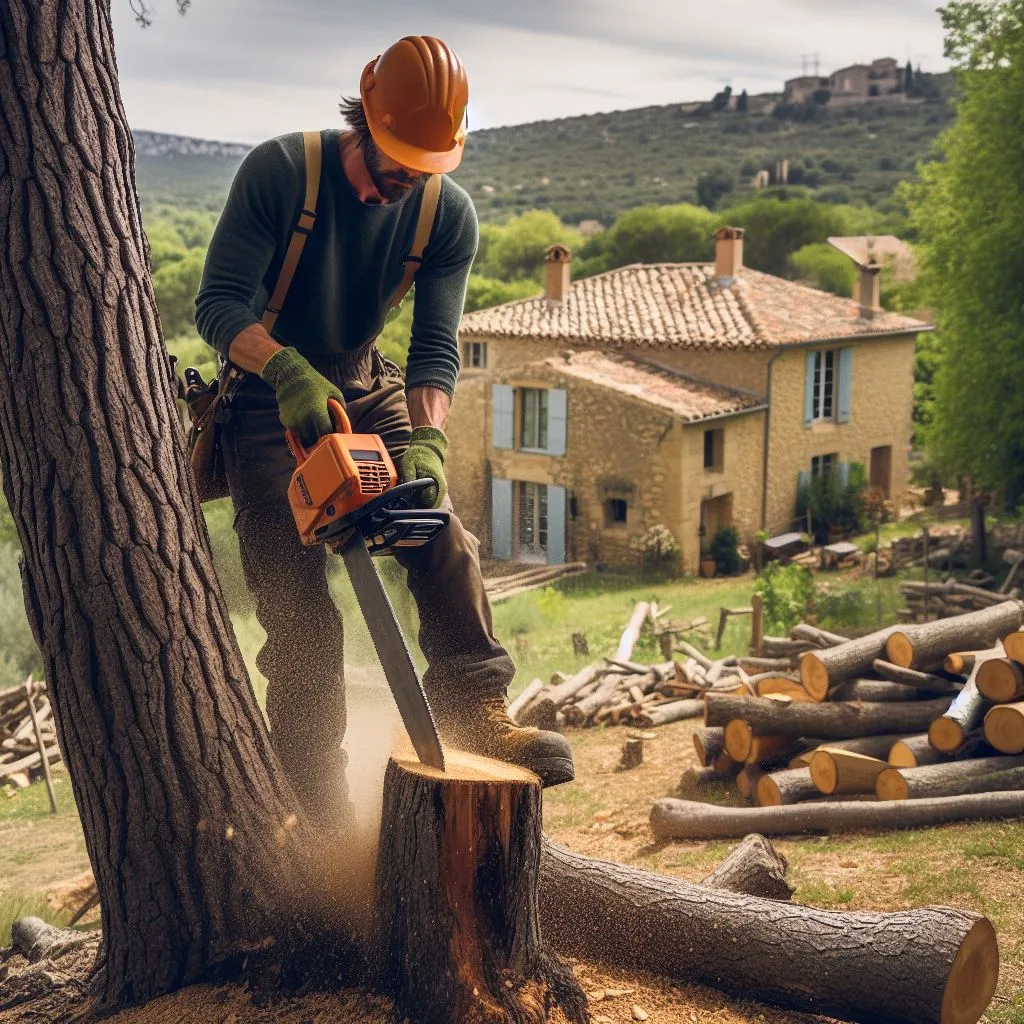The new features in a few words:
Faced with the multiplication of “megafires” in forests and vegetation, the new law of July 2023 strengthens prevention and the fight against the intensification and extension of fire risk.
The text makes forest protection plans obligatory in departments at risk in order to allow a global approach to prevention in Interservices focused mainly on the implementation of Forest Fire Risk Prevention Plans (PPRIF) and refocusing. of the policy for controlling emerging fires.
This law also strengthens the implementation and control of Legal Clearance Obligations (OLD) to reduce the risk of fires starting and protect populations, homes and emergency resources.
To find out more about the regulations, you will find below the main elements of this law, with links to access the texts
It contains eight main themes :
– Build strategies aimed at strengthening prevention, protection and the fight against the intensification and extension of fire risk;
– Organize peripheral forest/housing/Infrastructure areas to reduce fire outbreaks and the vulnerability of people and property;
– Better the forest and its silviculture in the face of fire risk;
– Improve the management and development of forests;
– Strengthen synergies between agricultural practices and forest fire prevention (agricultural cuts)
– Raise public awareness of fire risk;
– Equip fire fighting to match the risk;
– Seek funding for the reconstitution of more resilient forests resistant to global warming
Main new features in Legal Clearing Obligations
- Integration of the OLD perimeter into town planning documents (Art L131-16-1 of the Forest Code)
- The decree of March 29, 2024 exempts from prior declaration, tree felling necessary for compliance with OLDs, adds DFCI easements to the list of public utility easements, allows the prefect to issue certain special authorizations for felling tall trees, harmonizes the types of work contained in prefectural decrees and defines measures to reconcile OLD’s work with the issues of protection of protected species and their habitats.
- Integration of OLDs into the mandatory information for buyers and tenants (IAL) is reinforced by Article L125-5 – Environmental Code – Légifrance
- Sale of a property conditioned by the completion of the OLD and mandatory information of the tenant: Article L134-16 – Forestry Code (new) – Légifrance specifies this obligation of clearing in accordance with the provisions of the decree of March 29, 2024
- Control of compliance with OLDs which can be certified on honor in accordance with the new Art D-134-7 of the Forest Code. The certificate will be annexed to the promise of sale as well as to the authentic deed: it is therefore VERY IMPORTANT to know the regulations perfectly because the slightest error could have very serious consequences for the seller!
- Simplification of the control of OLD: If it is impossible to carry out a visual inspection from outside the fenced built plots, a notification which sets a time limit within which the inspection is carried out, and which is left on site or posted at the town hall if the owner is unknown. If access is refused by the owner, it can now be authorized without delay by the judicial authority under the conditions mentioned in art L206-1 of the rural and fishing code.
- Sharing of responsibility for areas to be cleared using third party funds as complex as ever: when OLD is superimposed on an undeveloped plot outside an urban zone, each owner must clear the parts closest to the boundaries of the plots housing the construction or installation at the origin of the obligation, in accordance with the provisions of article L 131-13 du CF. This provision, initially intended to simplify the zoning of OLDs, is unfortunately far from working for non-geometric plots. A complex GIS calculation is therefore necessary for this zoning calculation, but also to integrate numerous non-registered elements that must be cleared, including private access roads, but also swimming pools, sheds, workshops, sheds, parking areas, gas tanks, caravans and mobile home present for more than 3 months, etc.
- End of the responsibility of the transport infrastructure manager (open roads, railways) in relation to the owner of land subject to OLD (except for power lines)
- Strong penalties for non-compliance with the OLD: non-compliance with the OLD is now punishable by the fine provided for 5th class contraventions, i.e. a maximum of €1,500 or €3,000 in the event of a repeat offense. The Mayor (or prefect) issues formal notice to carry out the clearing work within a time limit he sets. If the work is not carried out, the prefect may then impose an administrative fine in accordance with Art 135-2 of the CF, up to €50 per m2 subject to OLD. (the OLD at 50 m from an isolated house represent approximately 10,000 m2 and 40,000 m2 in the case of OLD increased to 100 m…) Finally, the criminal court can also pronounce appropriate criminal sanctions fines now between €50 and €100 per day and per hectare subject to OLD.
- Facilitated implementation of OLDs on third party land: thanks to a simplified agreement procedure, communities can carry out brush clearing work with the written or tacit agreement of the owners which is obtained under the conditions defined in the decree of March 29, 2024.
- Responsibility for clearing operations: When they carry out clearing work at the request of private owners, municipalities, their groups and mixed associations are reimbursed for the costs incurred for the work as well as ancillary costs ( Art L 131-14 of the CF )
- Publication of an Interministerial decree defining the bases of the types of work that must be contained in the next prefectural decrees defining the modalities and technical criteria for clearing work, as well as the specific measures that can be defined by the prefects to take into account local issues and issues of protection of species and their habitats. This text is therefore the announced short-term end of the prefectural decree of March 30, 2015 establishing permanent regulations for compulsory clearing in the Var . We will have to wait for the publication of the new prefectural decree to analyze the consequences, but it already seems very likely that there could be a better adaptation of OLD to certain landscape issues by allowing the maintenance under conditions of isolated trees near constructions and street trees and hedges.
On the other hand, certain environmental measures could make the carrying out of the work very complicated if they no longer allow a good reconciliation of the issues (certain measures already imposed in some PPRIFs are practically impossible to carry out). It also seems likely that the incineration of the products of OLD is no longer authorized unless it is impossible to crush or export them (concept of distance from a recycling center which could be around ten kms)
o find out more, read a little below:
The defense of the forest against fire (DFCI), managed by the ministry responsible for forests , is based on a global policy for the development and maintenance of rural and forest areas. It implements the tools for programming, development and maintenance of massifs, resulting from the forest code.
The forest defense policy against fire implemented by the State through Title III of Book I of the Forest Code distinguishes the measures applicable throughout the national territory (articles L131-1 et seq.), from those specific to woods and forests classified as “fire risk” (articles L132-1 et seq.) and to territories deemed particularly exposed to risks (articles L133-1 et seq.) .. The forest code provides in particular:
- For forests throughout the national territory :
- regulations on the use of fire
- urban planning, particularly through Forest Fire Risk Prevention Plans (PPRIF). Natural Risk Prevention Plans (PPR) constitute a public utility easement, enforceable against third parties. They are annexed to the Local Municipal Urban Planning Plan (PLU) or intercommunal (PLUi)
- For forests in territories classified as “fire risk” and those in territories deemed particularly exposed to fire risks (measures common to territories, woods and forests exposed to fire risks (Articles L134-1 et seq.):
- Legal Clearing Obligations (OLD, articles L134-5 and -6)
- road easements linked to the defense of woods and forests against fires
- Forest Protection Plans Against Fires (departmental or interdepartmental), PPFCI or PDPFCI
- the Massive Plans for the Protection of Forests Against Fires (PMPFCI). At the scale of the massifs, the PMPFCI breaks down the essential points of the PPFCI
The Law of July 10, 2023, extends the consideration of forest fire risk in various public policies and in particular in biodiversity protection and town planning policies.
In territories classified as “fire risk” and in those deemed particularly exposed to fire risks , the creation of a Departmental or Interdepartmental Plan for the Protection of Forests Against Fire (PPFCI or PDPFCI) is made compulsory.
These plans must specify the scope of application of the new provisions of the forest code (identification of vulnerable forest areas and their interfaces in a contiguous strip of 200m) and their articulation with those of the environment code (PPR procedure). These guidance and planning documents aim to:
- define the inter-service policy to be implemented in a department in terms of DFCI in all its aspects ;
- refocus the policy for controlling emerging fires developed since 1966 on forest areas that generate risk;
- implement the forest fire risk prevention policy by the PPR.
The law aiming to strengthen the prevention and fight against the intensification and extension of fire risk , of July 10, 2023, extends the consideration of forest fire risk in various public policies and in particular in forest protection policies. biodiversity and town planning. This law provides for the development of a national and interministerial strategy for the defense of forests and non-forested areas against fires, linked to the national forest and wood program.
Beyond the obligations of the forest code, all the actors concerned by the risk of forest fires brought together under the prefectural authority may be required to design more general information documents such as departmental atlases of forest fire risks. intended in particular to determine the municipalities where the sensitivity to the risk of forest fire is the greatest. Similar initiatives exist at the regional level (regional forest fire risk atlases) from certain DREAL/DRAAF (Centre-Val de Loire or Pays de la Loire for example).
Some Links to consult
https://www.prevention-incendie-foret.com/connaitre-les-regles/debroussaillement
https://www.prevention-incendie-foret.com/protection-incendie-guide-interactif/
https://foret.ign.fr/themes/prevention-des-incendies-et-preparation-au-risque
Here are the main articles in force on the regulation of prevention and fight against the intensification and extension of fire risk.
Modified by Order No. 2012-92 of January 26, 2012 – art. 5
In the event that the damage guaranteed by an insurance contract results from a forest fire, the insurer may, if it is established that the insured has not complied with the obligations arising from articles L131-4, L131-8, L131-12, L131-14 à L131-18, L134-4 à L134-12, L135-2, L162-2, L163-4 à L163-6 of the new forest code, apply, in addition to the franchises provided for in the contract where applicable, an additional franchise of a maximum amount of 5,000 euros.
Article L131-12
Version in force since July 12, 2023
Modified by LAW n°2023-580 of July 10, 2023 – art. 16
When the presence on a property of constructions, sites and installations of any kind results, in application of articleL. 131-11, L. 134-6 et L. 134-10 à L. 134-12, an obligation to clear brush which extends beyond the limits of this property, the owner, or occupant, of the neighboring funds included in the perimeter subject to this obligation cannot oppose their realization by the person from whom the obligation results and to whom is responsible for them or by the person to whom the latter has given written or tacit agreement to carry them out in application of article L. 131-14. He can carry out this work himself. He can carry out this work himself.
In the event of refusal of access to his property, the obligation to clear brush or maintain it in a cleared state is his responsibility.
Article L135-2
Version in force since July 12, 2023
Modified by LAW n°2023-580 of July 10, 2023 – art. 25
In the event of a noted violation of the obligation to clear brush resulting from the provisions of this title, and regardless of the criminal proceedings that may be brought, the mayor or, where applicable, the representative of the State in the department gives formal notice to the person bound by the obligation to clear brush and to carry out the clearing work or to maintain it in a cleared state within a time limit that it sets.
When this person has not carried out the work prescribed by the formal notice at the end of the set deadline, the competent administrative authority of the State may impose a fine the amount of which cannot exceed 50 euros per square meter subject to the obligation to clear brush.
Article L163-4
Version in force since July 12, 2023
Modified by LAW n°2023-580 of July 10, 2023 – art. 49
Unintentionally causing fire in woods and forests belonging to others, by fires lit less than 200 meters from these lands, by fires lit or left without sufficient precautions, by fireworks lit or fired, by the abandonment of waste from smoking products defined in articles L. 3512-1 and L. 3514-1 of the public health code or by any machine or device generating flammable materials or high heat, is punished in accordance with the provisions articles 322-5, 322-15, 322-17 and 322-18 of the penal code.
The fact, for the person who has just caused a fire under the conditions mentioned in this article, of not intervening immediately to stop the incident and, if his action was insufficient, of not immediately notifying an administrative or police authority, results in the application of the second paragraph of article 322-5 of the penal code ..
The court may, in addition, order, at the expense of the convicted person, the publication in full or in extracts of its decision or the dissemination of a message whose terms it explicitly sets, informing the public of the reasons and content of its decision, in one or more newspapers that it designates.
Article 322-5
Version in force since May 19, 2011
Modified by LAW n°2011-525 of May 17, 2011 – art. 185
The destruction, damage or involuntary deterioration of property belonging to another as a result of an explosion or fire caused by failure to comply with an obligation of prudence or safety imposed by law or regulation is punishable by one year’s imprisonment and a fine of 15,000 euros.
In the event of a clearly deliberate violation of a particular obligation of caution or safety provided for by law or regulation, the penalties incurred are increased to two years’ imprisonment and a fine of 30,000 euros.
When it comes to the burning of woods, forests, moors, scrubland, plantations or reforestation of others, the penalties are increased to two years’ imprisonment and a fine of 30,000 euros in the case provided for by the first paragraph, and to three years’ imprisonment and a fine of 45,000 euros in the case provided for in the second paragraph.
If this fire occurred in conditions likely to expose people to bodily harm or to create irreversible damage to the environment, the penalties are increased to three years’ imprisonment and a fine of 45,000 euros in the case. provided for by the first paragraph, and to five years’ imprisonment and a fine of 100,000 euros in the case provided for by the second paragraph.
If the fire causes total incapacity for another person to work for at least eight days, the penalties are increased to five years’ imprisonment and a fine of 75,000 euros in the case provided for in the first paragraph, and to seven years imprisonment and a fine of 100,000 euros in the case provided for in the second paragraph.
If he causes the death of one or more people, the penalties are increased to seven years’ imprisonment and a fine of 100,000 euros in the case provided for in the first paragraph, and to ten years’ imprisonment and 150,000 euros fine in the case provided for in the second paragraph.




